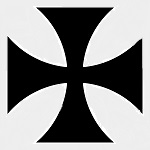Corgi AA37803 German Albatros D.V Fighter - Ernst Udet, Jasta 11, Jagdgeschwader 1, 1917 (1:48 Scale)
"For seconds, I forgot that the man across from me was Guynemer, my enemy. It seems as though I were sparring with an older comrade over our own airfield."
- Ernst Udet, recounting his engagement with famed French WWI flier, George Guynemer
 The Albatros D.V was a German fighter airplane used during World War I. In April 1917, Albatros received an order from the Idflieg (Inspektion der Fliegertruppen) for an improved version of the D.III. The resulting D.V featured a new fuselage with an elliptical cross-section. The flat fuselage sides of the D.III were eliminated. The D.V also used the enlarged rudder of the Ostdeutsche Albatros Werke (OAW) D.III. The upper wing was repositioned 4 inches closer to the fuselage, while the lower wings attached to the fuselage without a fairing. The wings themselves were similar to those of the standard D.III, except for a revised linkage of the aileron cables. Early examples of the D.V featured a large headrest, which was typically removed by pilots because it obstructed the field of view. Aircraft deployed in Palestine used two wing radiators to cope with the warmer climate.
The Albatros D.V was a German fighter airplane used during World War I. In April 1917, Albatros received an order from the Idflieg (Inspektion der Fliegertruppen) for an improved version of the D.III. The resulting D.V featured a new fuselage with an elliptical cross-section. The flat fuselage sides of the D.III were eliminated. The D.V also used the enlarged rudder of the Ostdeutsche Albatros Werke (OAW) D.III. The upper wing was repositioned 4 inches closer to the fuselage, while the lower wings attached to the fuselage without a fairing. The wings themselves were similar to those of the standard D.III, except for a revised linkage of the aileron cables. Early examples of the D.V featured a large headrest, which was typically removed by pilots because it obstructed the field of view. Aircraft deployed in Palestine used two wing radiators to cope with the warmer climate.
The D.V entered service in May 1917 and, like the preceding D.III, immediately began experiencing structural failures of the lower wing. Indeed, anecdotal evidence suggests that the D.V was even more prone to wing failures than the D.III. Furthermore, the D.V offered very little improvement in performance. This caused considerable dismay among frontline pilots. Manfred von Richthofen denounced the D.V as "obsolete" and "ridiculously inferior" to Allied scouts such as the Camel and S.E.5a. Nevertheless, 400 D.Vs were ordered in May and 300 more in July.
In October 1917, production switched to the D.Va, which reverted to the D.III's aileron cable linkage to provide a more positive control response. The wings of the D.III and D.Va were in fact interchangeable. In an effort to resolve continuing problems with wing flutter, the D.Va also featured a metal sleeve to strengthen the lower main spar, as well as a small brace connecting the interplane struts to the leading edge of the lower wing. These modifications increased weight while failing to cure the flutter problem.
While most D.V aircraft were equipped with the 170 hp Mercedes D.IIIa, late D.V and almost all D.Va aircraft used the high-compression 180 hp Mercedes D.IIIaŘ.
The D.Va was the final development of the Albatros D.I family, and the last Albatros fighter to see operational service during World War I. Despite its well-known shortcomings and general obsolescence, Albatros and OAW produced approximately 900 D.V and 1,612 D.Va aircraft. Service numbers peaked in May 1918; 131 D.V aircraft and 928 D.Va were on the Western Front at that time. Numbers declined as production ended and the superlative Fokker D.VII entered service, but the D.Va remained in widespread use until the Armistice.
Pictured here is a 1:48 scale replica of a German Albatros D.V fighter piloted by Ernst Udet who was attached to Jagdgeschwader 1 during 1917.
Sold Out!
Dimensions:
Length: 6-inches
Wingspan: 7-1/2-inches
Release Date: December 2008
Historical Account: "Aced Out" - Colonel General Ernst Udet was the second-highest scoring German flying ace of World War I. He was one of the youngest aces and was the highest scoring German ace to survive the war (at the age of 22). His 62 victories were second only to Manfred von Richthofen, his commander in the Flying Circus.
Udet's success attracted attention for his skill, earning him an invitation to join the Flying Circus, Jagdgeschwader 1, an elite unit of German fighter aces under the command of the famed Red Baron Manfred von Richthofen. Richthofen drove up one day as Udet was trying to pitch a tent in Flanders in the rain. Pointing out that Udet had 20 kills, Richthofen said, "Then you would actually seem ripe for us. Would you like to?"
Of course Udet would. After watching him down an artillery spotter by frontal attack, Richthofen gave Udet command of Jasta 11, von Richthofen's own former squadron command. The group commanded by Richthofen also contained Jastas 4, 6 and 10. Udet's enthusiasm for Richthofen was unbounded. Richthofen demanded total loyalty and total dedication from his pilots, cashiering immediately anyone who did not give it. At the same time he treated them with every consideration. When it came time to requisition supplies, he traded favours for autographed photos of himself that read: "Dedicated to my esteemed fighting companion." Udet remarked that because of the signed photographs, " ... sausage and ham never ran out."


